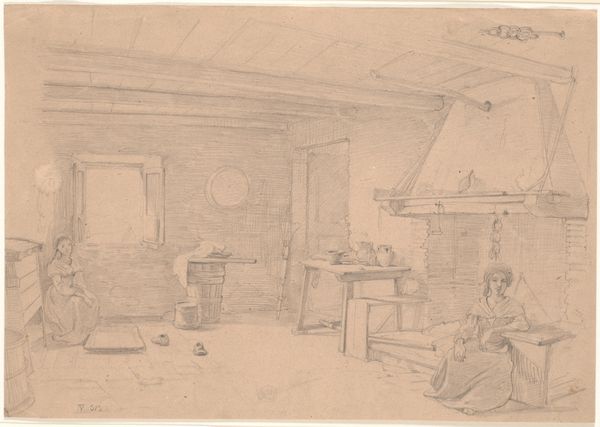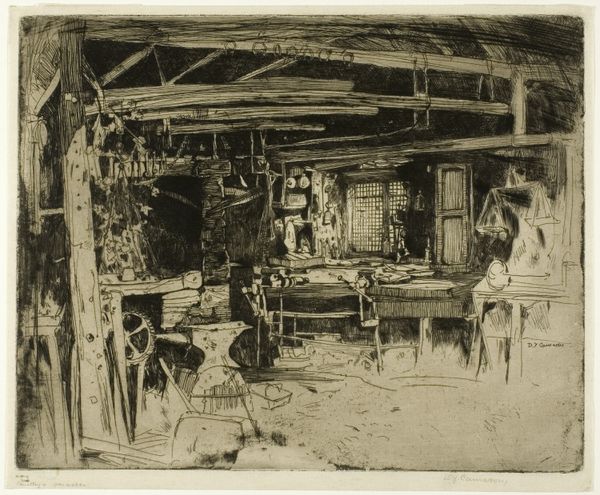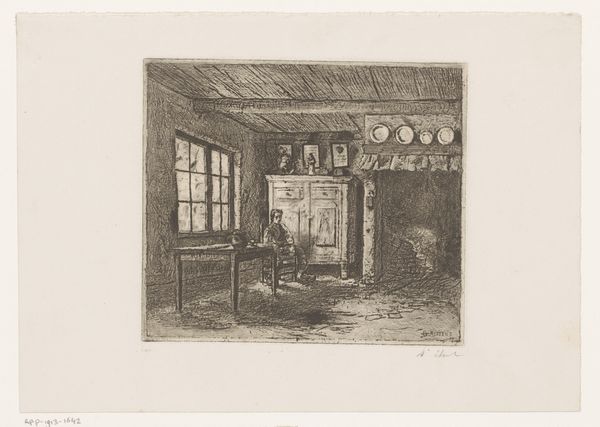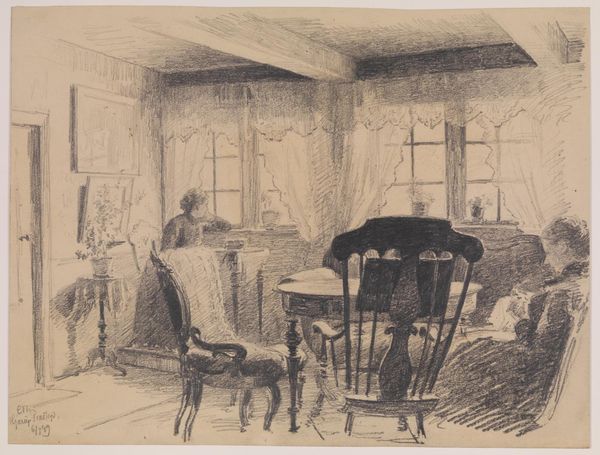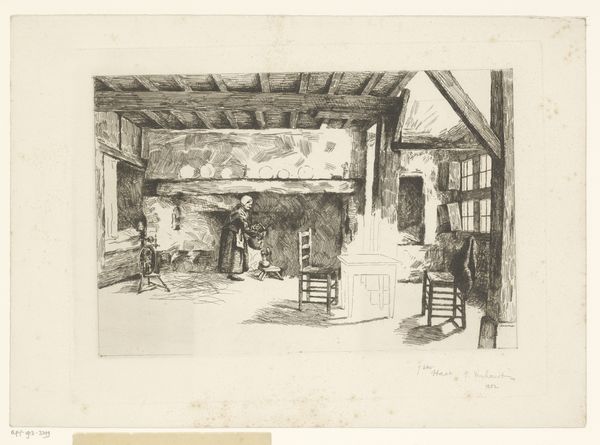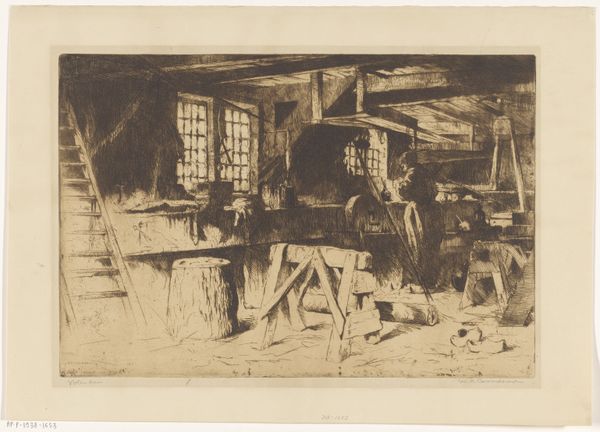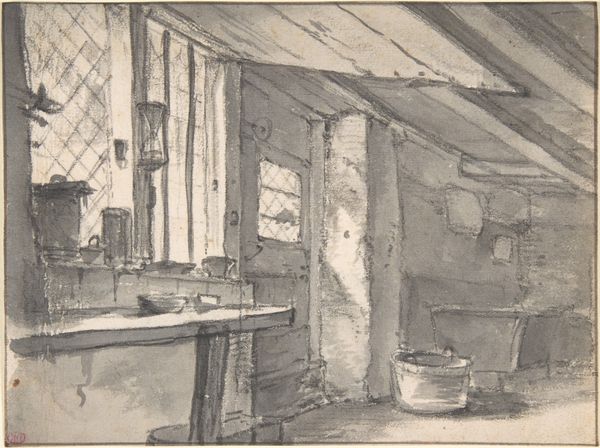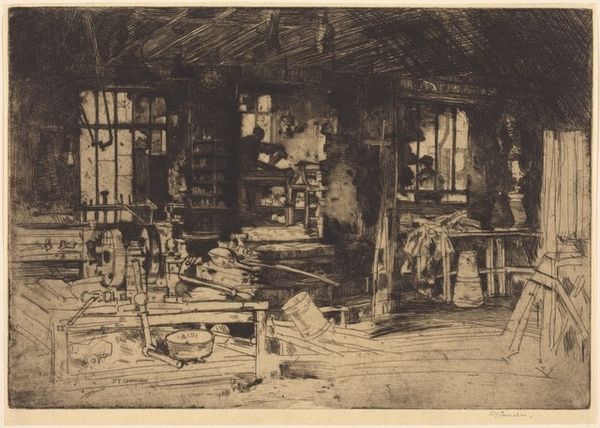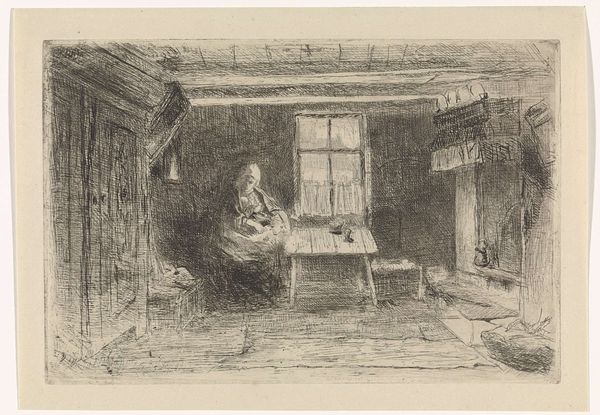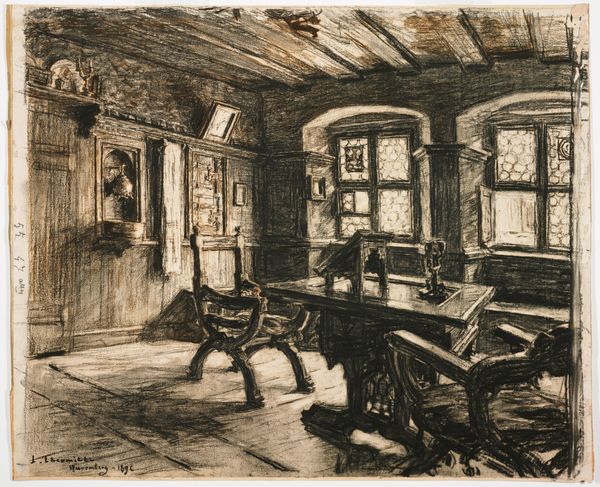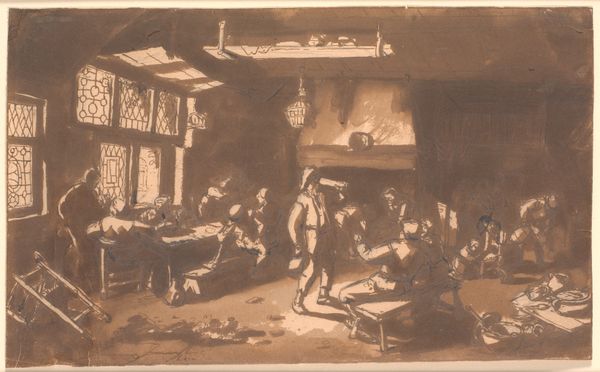
drawing, print, etching
#
drawing
# print
#
etching
#
genre-painting
#
realism
Copyright: National Gallery of Art: CC0 1.0
Curator: Editor: So here we have "Smithy", an etching by Elisha Kent Kane Wetherill. It gives me a strong sense of… utilitarian grit, the way the space is depicted, cluttered but clearly functional. What stands out to you in this work? Curator: I see a study in labor. Wetherill isn't just showing us a scene, he's offering insight into the means of production itself. Consider the medium, etching. It’s an inherently laborious process, mirroring the labor depicted within the smithy. The image isn’t just about the tools or space; it’s about the act of making and the social position of labor. Editor: That's interesting. I hadn't considered how the etching process connects directly to the labor represented. Do you think that the lack of a clear date limits how we interpret it? Curator: Not necessarily. While a specific date could pinpoint the context, its absence allows us to consider broader themes of industrial work. This space, regardless of era, reflects the universal human need to produce. Look at the distribution of light. It hits tools and work surfaces, not people. It draws attention to the material reality. Editor: It definitely shifts my perspective. The tools themselves become almost like actors in this space, not just implements. But, I am now curious if Wetherill ever explored themes beyond manual trades in his work? Curator: Wetherill created prints of other spaces too, from domestic scenes to urban landscapes, often showing scenes from everyday life. To further your materialist thinking, research how he may have approached those settings. What details are highlighted? Where are the contrasts in how he chooses to render space and texture? Editor: This conversation made me think about printmaking in an entirely new light – seeing how the medium shapes the message itself. Thank you! Curator: The process illuminates how art mirrors life by focusing on tools and spaces as actors within the scene. Thank you as well.
Comments
No comments
Be the first to comment and join the conversation on the ultimate creative platform.

